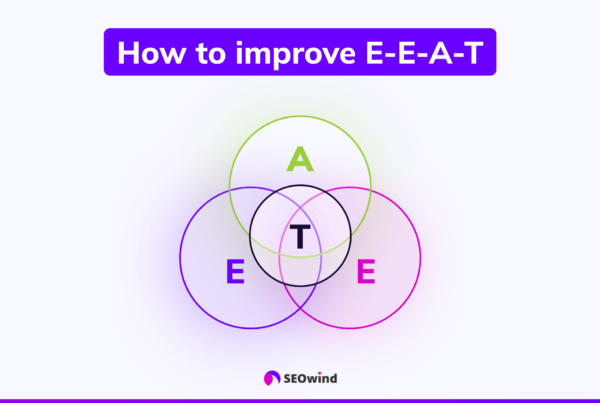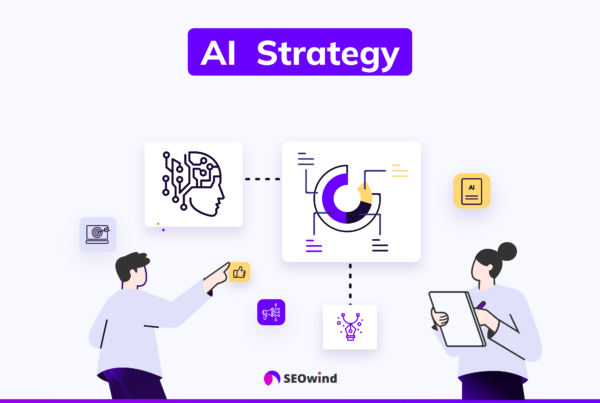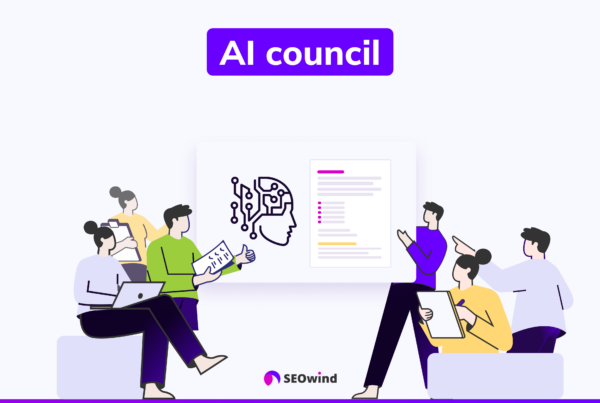Are you trying to figure out content writing types? You’re not alone. From blogs to ebooks, product descriptions to social media posts, the world of content creation is vast and ever-expanding.
This comprehensive guide will delve deep into the many facets of content writing. We will equip you with essential knowledge, tips, and tools to quickly navigate various forms of online written communication. Say goodbye to confusion as we unravel everything about content writing in this all-encompassing resource.
What is Content Writing?

Content writing is crafting purposeful, engaging written material to inform or persuade an audience. The primary objective of content writers is to produce value-added text that appeals directly to a specific target group’s interests or needs. This form of communication goes beyond mere advertising. It’s a tool businesses, organizations, and individuals use to show brand authority and forge connections with their readership while establishing authority in their particular niche.
The rise of digital platforms has created a high demand for well-crafted written work across industries. With millions browsing the web daily seeking information or entertainment, providing relevant and high-quality online content has become a crucial aspect.
In essence, effective content writing helps bridge gaps between brands and their audiences while offering valuable insights on topics ranging from industry news updates to instructional materials such as how-to guides or tutorials – making it indispensable for those aiming to thrive in today’s digitally-driven world.
Types of Content Writing [key features & examples]
Content writing is a diverse field, encompassing various forms and styles, tailor-made for their specific purpose. Understanding the nuances of different types of content writing will empower you to excel in any project or develop your expertise in a particular area.
Advertising/Sales Copywriting
Advertising copywriting revolves around creating persuasive sales pitches highlighting product benefits through words that sell tailored for advertisements across channels like print ads, radio spots, or online banners. Sales and marketing copywriters must understand the target audience, develop creative copy to drive action and maintain brand consistency in message delivery.
Article Writing
Article writing demands informative yet engaging compositions based on a specific subject matter alongside supporting evidence or expert quotes addressing broader topics than blog posts but shorter than ebooks. Article writing requires exceptional research abilities.
Blog Post Writing
Blog post writing refers to creating informative, engaging articles published on websites or online platforms. The primary goal is to attract an audience by providing valuable information and encouraging readers to share it with their social networks. With blog content covering various niches, from lifestyle to technology, blog writers must thoroughly research topics, craft compelling headlines and use storytelling techniques interspersed with relevant multimedia elements.
Content Scriptwriting
Scriptwriting involves creating content for various forms of media, such as film, television, radio, or theater. This type of writing requires storytelling, dialogue, and scene-crafting skills, as well as an understanding of the specific medium’s demands. Examples of content scriptwriting include screenplays, television scripts, radio plays, and stage plays.
Copywriting
Copywriting refers to crafting persuasive content for promotional materials across multiple channels such as print, digital, radio, or television. Distinct from sales copywriting, it covers a broader range of mediums while emphasizing subtle persuasion without being overly aggressive. Compelling headlines, engaging storytelling techniques, and a profound understanding of the target audience are essential skills for aspiring copywriters.
Creative Writing
Creative writing entails crafting original content such as stories, poems, or essays that showcase the content writer’s imagination and artistic expression. The goal is to entertain, inspire, or provoke thought within the readers. Examples of creative writing include novels, short stories, poetry, and personal essays.
Ebooks & White Papers
Ebooks and white papers are comprehensive, long-form content to educate the reader about complex topics. While ebooks typically provide general overviews of a subject, white papers delve deeper into technical or industry-specific issues. Both formats require extensive research skills and strong organizational capabilities to present well-structured content that flows seamlessly.
Editing and Proofreading
This type of content work focuses on refining and perfecting existing content, ensuring it is free of errors, properly formatted, and effectively communicates the intended message. The goal is to improve the overall quality and readability of the content. Examples of editing and proofreading tasks include reviewing and revising manuscripts, articles, blog posts, and marketing materials.
Email Marketing
Email marketing content involves crafting content that will be sent to subscribers or potential customers through email. The objective is to engage, inform, and convert leads into customers. Examples of email marketing campaigns include promotional emails, newsletters, and transactional emails such as order confirmations or abandoned cart reminders.
Ghostwriting
Ghostwriting is the practice of writing content on behalf of someone else, typically without receiving public credit for the work. The content can range from blog posts, articles, and books to speeches and social media content. Examples of ghostwritten content include memoirs, guest blog posts, corporate speeches, and opinion editorials.
Newsletters
Newsletter writing entails the creation of regular, informative content designed to keep subscribers or members of a specific group up-to-date on news, events, or promotions. The aim is to engage readers and maintain their interest in the organization or subject matter. Examples of newsletter content include company updates, industry news, event announcements, and curated content from other sources.
Press Releases
Press releases involve producing news-style articles announcing company news like product launches or acquisitions—writers craft captivating headlines with clear, concise language outlining event details. The objective of the press release is to provide reporters and journalists with newsworthy information suitable for publication in various media outlets.
Product Content
Product content consists of writing detailed descriptions or reviews for products, focusing on their features, benefits, and uses. This type of writing helps to inform and persuade customers to make a purchasing decision. Examples of product content include product listings on e-commerce websites, sales pages, product reviews or comparisons, and product brochures.
SEO Writing
Search Engine Optimization (SEO) writing aims to create content optimized for search engine visibility while providing value to readers. To achieve this balance, content writers must focus on keyword research and strategically incorporate these keywords within well-written blog posts or articles without hampering readability or relevance. Technical knowledge of search engines and SEO practices is vital for success in this niche.
Social Media Content Writing
Creating content explicitly designed for sharing across social media platforms requires developing creative and catchy captions crafted to resonate with targeted audiences. These social media posts should be concise, visually appealing, and targeted toward a specific audience. Examples include creating witty or thought-provoking tweets, crafting eye-catching captions for Instagram photos, and writing compelling LinkedIn articles to showcase professional expertise. Creating shareable infographics or designing Facebook posts to generate user engagement is also a part of social media content writing.
Technical Writing
This type of content writing focuses on creating clear, concise, and informative content about complex subjects, often related to technology or specialized industries. Technical writers are responsible for producing materials that educate, guide, or explain processes and concepts to a specific target audience. Examples of technical writing include user manuals, technical guides, white papers, and online help documentation.
User Manuals/Documentation
User manuals or documentation, created by technical writers, assist users in understanding how to navigate a product or service effectively. This type of content writing requires clear and concise language. It includes illustrative visuals such as diagrams or flowcharts to guide the reader through complex tasks. Attention to detail is crucial as accuracy is critical for comprehensive user guides prepared by technical writers.
UX Writing
UX (User Experience) writing focuses on crafting microcopy – brief snippets of text integrated within a digital interface guiding users through actions like submitting forms or navigating an app more intuitively. UX writers must possess strong instincts regarding usability and be able to communicate complex ideas concisely while exuding brand identity through tone consistency.
Website Copywriting
This type of content writing involves creating engaging, informative, and persuasive text for web pages and landing pages. It aims to grab visitors’ attention and guide them through the site. Examples of website copywriting include writing taglines, headlines, about pages, and service descriptions.
Types of Interactive Content

Interactive content engages users in an active, two-way experience instead of traditional, passive consumption. This form of content enhances user engagement and generates valuable insights by fostering meaningful interactions with the audience.
This section will explore various types of interactive content and learn how they can bolster your digital marketing efforts.
Contest
Contests or competitions are a popular form of interactive content for driving engagement, attracting new potential customers or subscribers, and creating brand awareness. They can involve anything from simple sweepstakes to elaborate creative challenges requiring user-generated content. Key features include:
- Prizes: Offering attractive rewards that resonate with your target audience.
- Time-sensitive: Contests usually have a specified duration.
- Entry criteria: Ensuring that contestants fulfill specific requirements like age or location.
Polls
Polls offer a straightforward way for users to share their opinions on multiple-choice questions. They’re efficient tools for gathering feedback or insights into user preferences while fostering interaction with the audience. Some typical applications include:
- Measuring customer satisfaction.
- Gauging interest in potential product offerings.
- Encouraging social sharing and boosting organic reach.
Quizzes
Quizzes can entertain users while collecting information about them to personalize your marketing efforts further. From trivia quizzes to personality tests, they help segment audiences and identify trends in customer behavior by posing relevant questions. Essential elements comprise:
- Variety of question types (multiple choice, true/false).
- Scoring system.
- Personalized results based on responses given by participants.
Calculators
Calculators are customizable online tools that users use to compute values tailored to their individual needs quickly. These tools optimize decision-making processes by presenting personalized calculations based on unique inputs provided by the user. Popular formats include:
- Financial calculators (mortgage payment projections)
- Health calculators (calorie consumption estimates)
- ROI (Return On Investment) calculators for illustrating potential business benefits.
Brackets
Brackets are interactive visual representations that enable users to participate in various elimination-based battles, often used during sports or competitive events. They can generate excitement, drive user engagement and encourage participants to return for updated results as the competition progresses. Critical elements include:
- Head-to-head choices.
- Tiebreakers.
- Voting opportunities to steer outcomes.
Interactive White Papers
Interactive white papers elevate static PDFs by incorporating dynamic elements such as clickable graphs, embedded videos, and live data feeds. These multimedia enhancements cultivate a more engaging user experience while maintaining the informative essence of traditional white papers. Key features involve:
- Visualization of complex data points through graphics.
- In-depth content supplemented with rich media assets.
- Responsive design for seamless navigation across devices.
By embracing these types of interactive content writing within your content marketing strategy, you can effectively harness audience engagement and promote meaningful connections with your target demographic. Additionally, leveraging user-generated insights will help you optimize your digital marketing campaigns further and drive better results overall.
Types of Video Content Writing

Video content is becoming increasingly popular. It plays a vital role in creating an engaging online experience. As a content writer, it’s essential to familiarize yourself with the various types of video content writing, as these can significantly enhance your skill set and expand your portfolio.
This section explores four popular forms of video content writing: product demonstrations, vlogs, how-to tutorials, and webinars.
Product Demonstrations
Product demonstration videos showcase the features and benefits of a product or service in action. This type of content is designed to inform and persuade potential customers about the product’s value. When crafting scripts for product demonstration videos:
- Start with a captivating introduction that highlights the problem being solved.
- Clearly explain how the product functions and its key features.
- Emphasize the benefits by showcasing real-life scenarios.
- Close with a call to action prompting viewers to try your offering.
Consider scripting for software demos or new gadget introductions highlighting functionality and usability as an example of content writing geared toward product demonstrations.
Vlog
A vlog (video blog) is a personal form of communication where individuals share their thoughts, experiences, or expertise on specific topics through videos. Unlike text-based blogs, vlogs are more conversational and intimate visual mediums as they establish deeper connections between creators and their audiences.
When assisting with vlog-style content:
- Adopt a conversational tone instead of formal language.
- Plan your core message while maintaining consistency across episodes/themes.
- Encourage viewer interaction by soliciting input, comments, questions, or suggestions for future topics.
Creating written outlines for vlogs simplifies filming processes while ensuring all essential points are covered without deviating from one’s intended message.
How-To Tutorials
How-to tutorials provide step-by-step instructions for completing a specific task or learning a skill. These videos empower viewers with the knowledge and confidence to perform activities by simplifying complex concepts or processes.
For successful how-to tutorial content:
- Create a concise yet detailed outline, breaking down steps into easily digestible segments.
- Emphasize essential points and reiterate them for clarity.
- Offer alternative solutions or suggestions for common challenges in tackling each stage.
- Use active language to motivate viewers and guide them with clear direction.
Examples of how-to tutorial writing include DIY projects, cooking techniques, software tips, and more.
Webinar
A webinar is an interactive live online seminar that enables participants to learn from experts without geographical limitations. Webinar content writers must craft persuasive and informative materials to maximize engagement during these events.
When developing webinar scripts and presentations:
- Begin with a compelling introduction delineating learning outcomes and addressing attendee needs.
- Organize information into logical sections, covering key points systematically.
- Include relevant visuals, such as slides or images, to reinforce the ideas.
- Foster interaction by inviting questions, comments, or events promoting polls/quizzes throughout the session.
As an example of content writing for webinars, consider outlining subject matter expert talks for professional development courses or industry-specific instructional sessions aiming at educating viewers on current trends.
By mastering these different forms of video content writing types, you’ll further elevate your career as a versatile content writer capable of delivering engaging multimedia scripts across diverse digital marketing platforms.
Types of Visual Content Writing
Visual content writing goes beyond crafting engaging text. It involves creating visually appealing and highly shareable multimedia pieces that convey your message effectively, boost brand visibility, and engage your audience. This section will discuss various types of visual content writing, such as videos, infographics, memes, GIFs, screenshots, and magazines.
Video
Videos are one of the most popular forms of visual content across different platforms. They provide a dynamic way to present complex ideas or concepts in an easy-to-understand format. Some key features include:
- Storytelling: Videos can communicate an emotional narrative through visuals and sound.
- Educational value: Both short explainer videos and long-form tutorials help users learn new skills or understand complex subjects.
- Entertainment: Engaging animations or live-action footage captures the viewer’s attention.
Examples of video content writing for businesses include promotional campaigns highlighting product features, customer testimonials showcasing user experiences, and industry thought leadership presentations.
Infographics
Infographics use graphical elements like charts and diagrams to visualize data and statistics compellingly. They make it easier for readers to grasp large amounts of information quickly while still providing valuable insights. Key features include:
- Simplifying data: Infographics break down complex numbers into clear visuals.
- Easy sharing: Well-designed infographics are highly shareable on social media platforms.
Some examples of content writing for infographics involve designing an illustration that explains a company’s sales performance metrics or showcases specific industry trends based on research findings.
Memes
Memes are humorous images or graphics with text overlay conveying cultural ideas or shared experiences relatable to many internet users. Their viral nature allows them to spread widely across social media platforms rapidly. Key features include:
- Humor factor: Memes often satirize pop culture references using ironic twists.
- Timeliness: Trending memes often tap into current events or news stories for relevance.
Brands leverage meme content writing to showcase their sense of humor, connect with younger demographics, and drive engagement through lighthearted marketing campaigns.
GIFs
GIFs (Graphics Interchange Format) are short, looping animation sequences often used for entertainment or communication. They can grab attention quickly due to their motion and attract users by evoking emotion or humor. Common features include:
- Short-duration: Most GIFs only last a few seconds.
- Subtle motion: Gentle movements or looped animations make them eye-catching and entertaining.
Examples of content writing using GIFs include showcasing product demonstrations on an e-commerce website or illustrating step-by-step instructions in a tutorial.
Screenshots
Screenshots are static images that capture specific moments from digital interfaces such as websites or mobile apps. They help visualize certain aspects of your product or service, making them valuable business tools. Key features include:
- Clarity: Screenshots provide clear visuals to guide readers through complex concepts.
- Credibility: Including screenshots in tutorials or testimonials lends legitimacy to your content.
Examples of screenshot content writing could involve showcasing key interface elements when discussing software solutions or attaching example images in customer support articles.
Magazines
Digital magazines offer a visually engaging layout through which long-form content can be presented attractively. These online publications cater to specific niche audiences and exhibit professional design work. Some key features encompass:
- Comprehensive storytelling: Magazines allow content writers to delve into intricate subjects under one thematic umbrella.
- Visual appeal: Through stunning graphics, typography, and imagery, magazines convey ideas visually while maintaining
Content Writing Basics
Before diving into the various types of content writing, it is vital to understand the basic steps and skills involved in creating high-quality content. The success of your content heavily relies on how well you execute these fundamental stages: research, planning, and writing.
Research

For any written content, thorough research is a crucial first step. It enables you to gather data, discover ideas, and identify trends relevant to your topic or industry. A few research methods include:
- Studying authoritative sources such as academic articles, white papers, and industry study reports
- Analyzing competitors’ approaches to similar topics
- Surveying target audience for insights into their preferences and pain points
- Utilizing keyword research tools to understand popular search queries related to your topic
When conducting research, always verify the credibility of sources and keep track of them for citations or reference.
Planning

Once you have gathered enough information through research, it’s time to plan the structure and outline for your content piece accordingly. Effective planning helps ensure that your work is organized logically and flows seamlessly from one point to another.
A few critical aspects involved in planning include:
- Determining your target audience’s needs or the objective of the content piece.
- Identifying an engaging title that captures readers’ attention.
- Creating an outline with headings/subheadings that cover all essential elements.
- Allocating appropriate word count limits per section if needed.
This phase allows you to quickly spot areas where additional information may be required or clarify specific details before investing time in the writing.
Writing

With thorough research already conducted and a clear plan, the composing stage is now. When writing different types of written content like blog posts, online reviews, SEO articles, or social media updates – consider these guidelines:
- Use simple language – Clarity trumps complexity when conveying a message effectively. Stick to short sentences while minimizing jargon to accommodate readers of varying expertise and backgrounds.
- Adopt a conversational tone – Speak directly to your audience. Use an active voice and second-person perspective (you/your) to establish rapport and humanize your writing.
- Follow best practices for the content type – Each format carries unique requirements, e.g., incorporating keywords naturally when working on SEO content or employing enticing headlines as part of advertising copywriting.
By taking these steps into account, you’ll lay a strong foundation for creating compelling content, setting yourself up for success as you venture into different types of content writing.
Content Writing Tips

Create Engaging Content
To create engaging content, it’s essential to understand your target audience and their preferences. Craft content that resonates with their pain points, interests, needs, or desires. Here are some tips for creating captivating content:
- Use attention-grabbing headlines: A compelling headline piques curiosity and entices readers to dive in further.
- Be authentic and relatable: Share genuine experiences or viewpoints that make the content more personal.
- Implement storytelling: Powerful stories evoke emotions that keep readers engrossed throughout the piece.
- Leverage original research or data: Data-backed information adds credibility to your argument and catches the reader’s interest.
Use the Right Tone and Voice
Adopting the right tone is crucial in different types of written content. It sets the overall mood, conveys attitude and personality, and helps forge connections with readers. When selecting your tone:
- Consider your brand identity: Align your writing style with the brand’s voice (i.e., formal, conversational, or witty) to maintain consistency across channels.
- Tailor it based on the type of content: For instance, user manuals require a concise instructional tone, while blog posts favor a friendly approach.
- Analyze your audience: Adjust language or humor considering their age group, location, professional background, et cetera.
Optimize for SEO performance
While crafting top-notch content is critical, implementing SEO best practices ensures increased online visibility and discoverability by search engines. Here are some vital pointers for optimizing types of writing services for SEO:
- Utilize relevant keywords naturally throughout the text without compromising readability or flow
- Integrate internal links with keyword-rich anchor texts
- Optimize meta titles and descriptions using primary keywords
- Structure articles utilizing headings (H1-H6 tags) so search engines can better comprehend topics within posts
Incorporate Visuals Effectively
Visual elements play a pivotal role in different types of web content. They aid viewer comprehension, break walls of text, and make the material more appealing. Implement these tips for compelling visuals usage:
- Incorporate relevant images that complement your points, but avoid generic stock photos
- Use data visuals like charts or graphs to represent complex information concisely
- Utilize infographics to deliver extensive details in an engaging format
- Embed videos, when explaining complex concepts, may benefit from a visual demonstration.
Proofread and Edit
Regardless of what you’re crafting—be it blog writing or website copywriting—polished work reflects professionalism. Never skimp on proofreading and editing, as this ensures content meets the highest quality standards. Keep these suggestions in mind while performing revisions:
- Check for spelling, grammar errors, typos, sentence structures, and readability scores.
- Scrutinize repetitive phrases or jargon; employ synonyms to diversify word choice.
- Compare structure with outlined headings or subheadings to identify gaps in information flow.
- Allow time between completion and review – for more precise judgment – or solicit third-party reviews for objective feedback.
Outsourcing Content

Content writing is essential to any online strategy, and businesses must decide whether to handle it in-house or outsource their content creation. This section will discuss the pros and cons of outsourcing content writing, when appropriate, and how to outsource your content needs.
Pros and Cons of Outsourcing
Outsourcing content writing has both its advantages and disadvantages. Here are some key points to consider:
Pros:
- Cost-efficiency: Outsourcing can save on overhead costs such as office space, equipment, software licenses, and salaries for full-time employees.
- Access to a diverse range of skills: Outsourced content writers typically specialize in various types of content writing; hiring them allows you to tap into expertise that might not be internally available.
- Scalability: As your business grows, you can quickly scale up or down the amount of work being outsourced based on demand without affecting internal resources.
- Flexibility: An outsourced team can work around-the-clock and deliver projects faster than an in-house team with limited working hours.
- Increased focus on core business activities: With outsourced content creation, businesses can shift their attention to other critical aspects like sales or developing new products.
Cons:
- Limited control over quality: Relying on external content writers for different types of written content may lead to inconsistencies in tone or branding if not managed correctly.
- Communication barriers: Working with freelancers from various locations could result in miscommunication due to language differences or cultural contrasts.
- Time management issues: Managing a remote team’s output requires tracking deadlines closely since late deliveries might impact marketing campaigns’ schedules.
When to Outsource Content Writing
Deciding when to outsource depends on several factors:
- Internal capabilities: If your company needs more skilled content writers proficient in specific types of content writing (e.g., advertising copywriting, technical writing), consider outsourcing to fill the gap.
- Budget constraints: Outsourcing could be a cost-effective solution if hiring full-time in-house content writers is not financially feasible.
- Time-sensitive projects: When you need content to be delivered quickly or require extensive research outside your team’s expertise, relying on experienced external professionals can meet tight deadlines.
- Expanding markets: Entering new markets may call for content localization – outsourcing to native speakers with cultural understanding ensures appropriate translations.
How to Outsource Content Writing
To successfully outsource content creation, follow these steps:
- Identify your needs and objectives: Clearly outline what types of content writing services you require – this will help select the appropriate freelancers or content writing agencies.
- Research potential providers: Check online platforms like Upwork, Fiverr, or specialized agencies offering different writing services; read reviews and past work examples for shortlisting potential candidates.
- Request samples and proposals: Ask for examples of relevant types of written content and detailed project proposals by shortlisted candidates to gauge their abilities related to your requirements.
- Conduct interviews: Interview potential candidates via video calls or messaging platforms, focusing on factors like communication skills, rates, turnaround time, and familiarity with your industry.
- Set clear expectations: Develop contracts specifying key deliverables such as word count, deadlines, editing processes, and confidentiality agreements.
By understanding when and how to outsource various types of content writing effectively, businesses can benefit from the expertise offered by professional freelance writers while maintaining control over quality and brand.
What Skills Does a Content Writer Need for Different Types of Content?
A range of specialized skills are required to excel in the various types of content writing. While some core abilities apply to all forms of online content creation, specific content formats demand unique expertise. Below is an overview of essential competencies that content writers must master to succeed across different types of written content.
Core Skills
- Research: The ability to thoroughly research and extract valuable information from credible sources is crucial for all types of content writing. Content writers should be adept at evaluating data quality and fact-checking their work to provide accurate and reliable content.
- Grammar and punctuation proficiency: Impeccable grammar and punctuation usage ensures clarity, coherence, and professionalism in any written material.
- Adaptability: A versatile content writer can tackle various topics with ease, adjusting tone, style, and vocabulary according to project requirements.
- Audience understanding: Knowing your target audience helps create tailored messages that effectively resonate with readers.
Type-Specific Abilities
- Blog Writing: Familiarity with storytelling techniques, incorporating personal experiences or opinions, and knowledge of writing engaging headlines.
- SEO Writing: Expertise in keyword research, optimizing titles and meta descriptions while maintaining readability within the text.
- Ebooks & White Papers: Proficient analytical skills for presenting complex concepts concisely; familiarity with long-form structuring elements like chapters or sections.
- User Manuals/Documentation: Technical comprehension and precise instructional writing capabilities help simplify involved procedures for end-users.
- UX Writing: Proficiency in crafting user-centric microcopy that guides readers through interface interactions seamlessly without distraction.
- Advertising/Sales Copywriting: Persuasive language skills and psychological insights enable compelling advertisement copy that incentivizes targeted calls-to-action.
- Press Release Writing: Knowledge of representing brands professionally by adopting appropriate media language while emphasizing news-value elements.
- Article Writing: Mastery in long-form journalism-style writing, with an understanding of structuring according to content purpose and publication platform suitability.
- Social Media Content Writing: Adeptness at crafting concise, share-worthy messages while utilizing platform-specific engagement features (e.g., hashtags).
- Website Copywriting: Competence in merging SEO practices with a sharp, persuasive language fit for brand image and site aesthetics.
- Product Content: Creativity and detailed-oriented approach to provide vivid product descriptions that evoke customer interest.
- Email Marketing: Knowledge of drafting effective subject lines, clear CTAs, and engaging copy aligned to email design specifics and audience segmentation principles.
By honing these diverse capabilities, the content writer ensures their work resonates with the intended audience across various content types. Developing a combination of core competencies and specialized skills enhances a content writer’s professional appeal within the competitive industry.
Which is the Important Element of Content Writing?
The types of content writing are diverse and encompass a wide range of styles and formats. However, regardless of the kind of content, some crucial elements remain consistent across all forms to make your work stand out. Let’s delve into these essential factors contributing to effective, high-quality content writing.
Clear and Engaging Headlines
A powerful, attention-grabbing headline is the first touchpoint with readers. It can make or break their interest in reading further. It should be concise, descriptive, and intriguing enough to entice people to click. Additionally, it must deliver what it promises. Otherwise, you risk losing credibility with your audience.
Well-Researched Information
Accurate information from reliable sources is vital in content creation, regardless of the type of content writing. Thorough research enables you to establish authority on a subject matter while providing factual evidence for your arguments or data points.
Readability
Creating digestible content promotes better understanding among your target audience. Achieve this by:
- Keeping sentences short and varied in structure
- Utilizing subheadings for skimming purposes
- Using bulleted or numbered lists when summarizing points
- Formatting text appropriately based on the medium (i.e., online vs print)
- Ensuring appropriate word choice without overly complex jargon
Storytelling and Relatability
Whether crafting an article or a social media post, incorporating storytelling techniques brings life to your message making it more relatable and engaging for the reader — even highly technical subjects can be transformed into compelling narratives using this approach.
Examples include:
- Personal anecdotes as conversation starters
- Case studies that provide real-life scenarios
- Creating analogies or metaphors to explain abstract concepts
Search Engine Optimization (SEO)
Incorporating SEO techniques into your content ensures it ranks higher on search engine results, increasing its visibility to potential visitors. This entails focusing on keyword research, optimal content length, meta descriptions, title tags, and URL structuring.
Call-to-Action (CTA)
Exceptional content stimulates the reader to take a specific action after reading it. Whether you want readers to sign up for your newsletter, visit your social media profiles, or purchase from your online store – a compelling CTA is essential to guide them toward their following actions.
What are the Best Tools to Write Content?
Exceptional content writing demands consistency, focus, and creativity. Numerous tools and hacks prove invaluable. Here’s a list of the best tools to help you create compelling and engaging written content.
Research Tools
- SEOwind: SEOwind is a handy research tool to analyze top-performing SERPs and keywords. If you want to write content that ranks this is the software to look into.
- Google Alerts: Keep yourself updated with relevant news and industry updates with this tool by setting up alerts for specific keywords.
- Ahrefs: A versatile tool for analyzing competitor websites, finding quality backlinks, doing keyword research, and understanding content gaps.
💡 More Keyword Research Tools: Discover the Best Keyword Research Tools of 2023
AI Content Writing Tools
- SEOwind: This AI Writing tool focuses on in-depth content and SEO research, creating content outlines along with writing long-form articles based on data.
- ChatGPT: It is used for creating a wide variety of content types, including programming code. Its ease of use and speed when producing content makes the tool ideal for users of all experience levels.
- Copy.ai: AI writing tool developing both short- and long-form sales material. Once you’ve input an outline, including headings, into the tool, it will write the rest of the content quickly.
💡 More Resources on AI and SEO Content Writing Tools 1. AI Content Writing Tools – The Best of 2023 2. Best SEO Content Writing Tools: Write Better & Rank Higher
Writing Assistant
- Grammarly: This grammar-checking software helps you write error-free content by rectifying grammatical mistakes, punctuation errors and suggesting better word choices.
- Hemingway Editor: Evaluate your text’s readability with Hemingway Editor, highlighting lengthy sentences or complex phrases that may require simplification.
Keyword Optimization
- Yoast SEO: An essential WordPress plugin designed to aid users in optimizing their blog posts/website copy with real-time suggestions on keyword placement.
Productivity Boosters
- Focus@Will: Stay focused while writing with curated background music scientifically proven to increase concentration.
- Trello: Plan your editorial calendar effectively using Trello boards to monitor project progress visually.
Visual Enhancements
- Canva: Simplify graphic design tasks with this user-friendly platform featuring pre-set templates for infographics, social media images, blog banners, etc.
- Unsplash/Pexels/Pixabay: Utilize these platforms offering high-quality stock photos.
What are the Best Hacks to Write Content?
Let’s explore some time-tested hacks to improve the content writing process.
- Create an outline: Streamline your thoughts and ideas by drafting a summary before diving into content writing. This step enables you to maintain coherence in your work.
- Set specific goals: Determine targets for daily word counts or articles, as it encourages you to stay disciplined and focused on producing quality work regularly.
- Minimize distractions: Turn off unnecessary notifications and allocate dedicated blocks of time exclusively for writing. Maintaining a distraction-free environment can drastically elevate your productivity.
- Use the Pomodoro Technique: Break down tasks into 25-minute intervals (“Pomodoros”), with five-minute breaks in between, which is known to increase efficiency.
- Master touch typing: Develop your touch typing skills using online learning platforms like TypingClub or Ratatype, as faster typing frees up precious time for planning and editing.
Adopting these tools and hacks can take your content writing proficiency to new heights – helping streamline research, organization, execution, and optimization processes essential to crafting captivating types of content writing. Each tool serves its purpose of enriching different aspects of the creative journey while delivering remarkable results.


